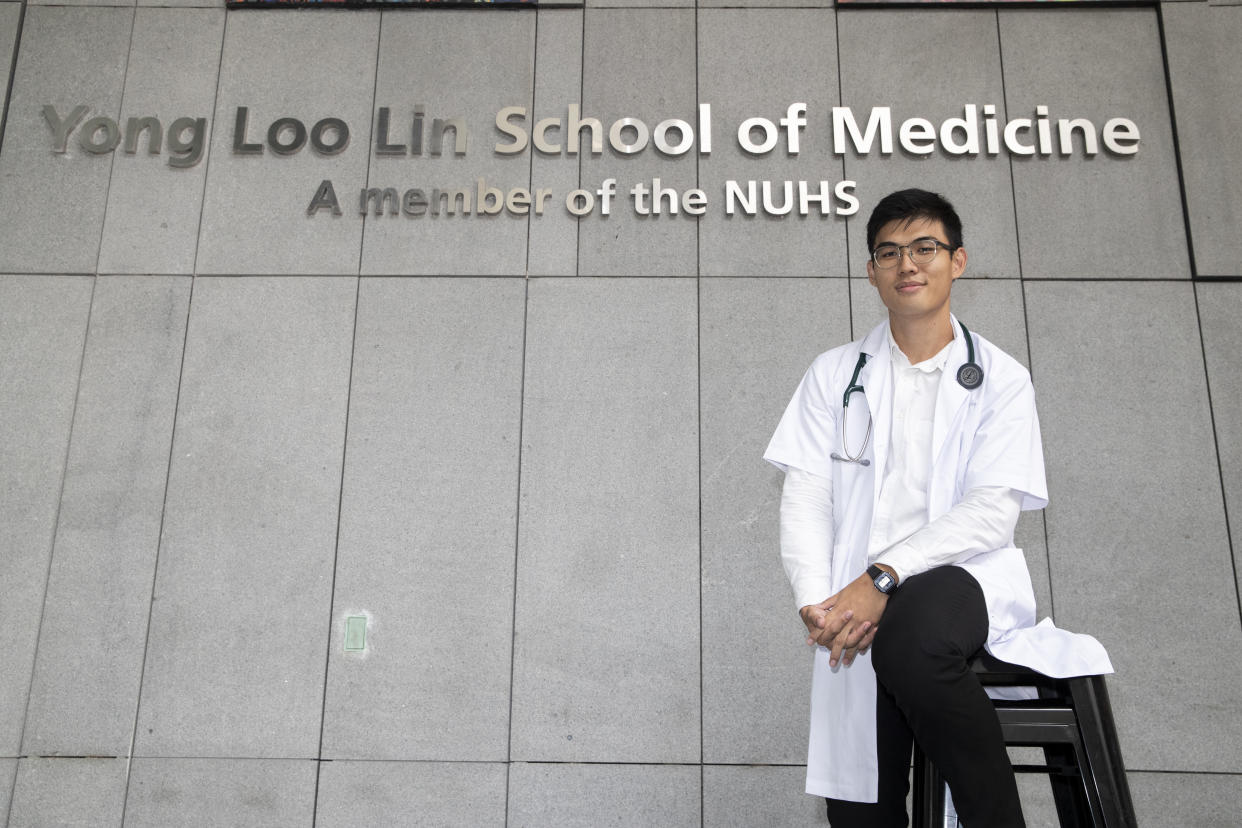NDR 2019: Lower income students can study to be doctors for at most $5,000 per year with bursaries

SINGAPORE – In a move to increase the socio-economic diversity of Singapore doctors, the government will enhance its bursaries for medical courses, to make them significantly more than bursaries for other university courses.
Announcing this, together with a slew of other bursary increases, Prime Minister Lee Hsien Loong said in his National Day Rally (NDR) speech on Sunday (18 August) that “added together with other bursaries from the university, lower income students will now pay at most $5,000 per year”.
“We should not let the cost of medical school deter good students from studying medicine and becoming doctors,” he said. “In fact, we want doctors to come from different segments of society, and have diverse educational and family backgrounds.”
This year, the National University of Singapore’s (NUS) Yong Loo Lin School of Medicine welcomed its first Institute of Technical Education (ITE) graduate, who was one of about 280 students accepted out of 2,000 applicants.
Medicine has the highest course fees of all the university courses. After government subsidies, medical school fees are almost $29,000 per year at the NUS and $35,000 per year at the Nanyang Technological University (NTU).
Upping bursaries for all tertiary courses
The Ministry of Education (MOE) will also enhance government bursaries significantly across the board. “For university students, we will increase government bursaries from up to 50 per cent of general degree fees today, to up to 75 per cent,” Lee said.
For a general degree programme in NUS, like Economics or Computer Science, full fees are about $8,000 a year. “Previously, a lower income student pays around $4,000 a year. If he uses his bursary fully on the fees, after the bursary enhancement, he will pay only $2,000 a year,” Lee illustrated.
As for polytechnic diploma programmes, “we will increase the bursary coverage from up to 80 per cent of the fees today, to up to 95 per cent”, Lee added. Full fees for a poly diploma are now around $3,000. “With a bursary, a lower income poly student currently pays around $600 a year. After we enhance the bursary, he will pay only $150 a year,” Lee said.
These measures will cover diploma and degree students at ITE, the Nanyang Academy of Fine Arts (NAFA), and the LASALLE College of the Arts (LASALLE) as well.
MOE also looked at the root of tertiary education costs - the basic price of a full-time tertiary education.
Lee pointed out that two Singapore universities, the Singapore Institute of Technology (SIT) and the Singapore University of Social Sciences (SUSS), “are more applied, and do more industry attachments and internships”. “Their operating costs per student can be lower, especially as student intakes grow,” he explained. “So MOE will lower the annual fees for the full-time general degree programmes in SIT and SUSS, from around $8,000 now, to $7,500.”
All these fee and bursary adjustments will apply to existing and new students from the next academic year.
More than just dollars and cents
Lee took pains to point out that “the point of these changes, to fees and bursaries, is not just the dollars and cents”.
“We are determined to make our education system as accessible as possible,” he said. “Students from less privileged backgrounds must be confident that they will get financial help to see them through their education. They should not feel at all disadvantaged or inferior to their more well-off classmates, or be deterred from pursuing a course just because of money.”
He urged alumni and the community to contribute generously to non-government bursaries that universities, polytechnics and ITE can set up on their own, in people’s names.
“The Government will match your donations, up to three times for the newer universities, and up to 1.5 times for the rest,” he said. “If you donate towards a bursary, you have enabled some promising young person to get a good start in life.”
Have a tip-off? Email us at sgnews.tips@verizonmedia.com. In your email, do provide as many details as possible, including videos and photos.
Related stories:
NDR 2019: Current economic situation doesn’t warrant immediate stimulus measures - PM Lee
NDR 2019: China and US have yet to find 'magic pill' for their differences
NDR 2019: Household income ceiling for additional preschool subsidies to be raised to $12,000



